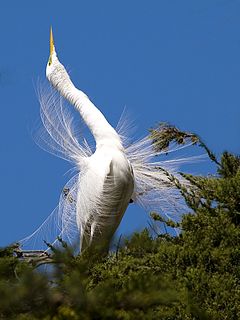 W
WAnimal communication is the transfer of information from one or a group of animals to one or more other animals that affects the current or future behavior of the receivers. Information may be sent intentionally, as in a courtship display, or unintentionally, as in the transfer of scent from predator to prey. Information may be transferred to an "audience" of several receivers. Animal communication is a rapidly growing area of study in disciplines including animal behavior, sociology, neurology and animal cognition. Many aspects of animal behavior, such as symbolic name use, emotional expression, learning and sexual behavior, are being understood in new ways.
 W
WIn animal communication, an alarm signal is an antipredator adaptation in the form of signals emitted by social animals in response to danger. Many primates and birds have elaborate alarm calls for warning conspecifics of approaching predators. For example, the alarm call of the blackbird is a familiar sound in many gardens. Other animals, like fish and insects, may use non-auditory signals, such as chemical messages. Visual signs such as the white tail flashes of many deer have been suggested as alarm signals; they are less likely to be received by conspecifics, so have tended to be treated as a signal to the predator instead.
 W
WEcholocation, also called bio sonar, is a biological sonar used by several animal species. Echolocating animals emit calls out to the environment and listen to the echoes of those calls that return from various objects near them. They use these echoes to locate and identify the objects. Echolocation is used for navigation, foraging, and hunting in various environments.
 W
WAposematism is the advertising by an animal to potential predators that it is not worth attacking or eating. This unprofitability may consist of any defences which make the prey difficult to kill and eat, such as toxicity, venom, foul taste or smell, sharp spines, or aggressive nature. Aposematism always involves advertising signals, which may take the form of conspicuous coloration, sounds, odours or other perceivable characteristics. Aposematic signals are beneficial for both predator and prey, since both avoid potential harm.
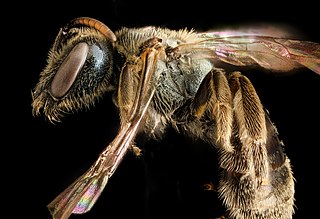 W
WBee learning and communication includes cognitive and sensory processes in all kinds of bees, that is the insects in the seven families making up the clade Anthophila. Some species have been studied more extensively than others, in particular Apis mellifera, or European honey bee. Color learning has also been studied in bumblebees.
 W
WBegging in animals is when an animal solicits being given resources by another animal. This is usually a young animal soliciting food from their parents, brood hosts or other adults. However, the resource is sometimes non-food related or may be solicited by adult animals. Begging behavior is most widely studied in birds, however, mammals, amphibians, and invertebrates perform begging displays. Generally in food solicitation, begging behavior is instinctive, although in some instances it is learned.
 W
WBumblebees, like the honeybee collect nectar and pollen from flowers and store them for food. Many individuals must be recruited to forage for food to provide for the hive. Some bee species have highly developed ways of communicating with each other about the location and quality of food resources ranging from physical to chemical displays. Honey bees are known for their specialized dances, such as the waggle dance which recruit other bees to the precise location of the food source. Bumblebees are not capable of transmitting this type of detailed information. Instead, the nest serves as a hub where bees receive information about the foraging bouts of her conspecifics. Differences between the communication methods of honeybees and bumblebees are mainly due to differences in colony size and nest structure. Bumblebees are distinct from honeybees because they lack receiver bees and are not capable of trophallaxis. They deposit collected nectar directly into the honey pots and don't share information of the quality of the resource with other bees through nectar transfer. Another bee may sample the nectar brought into the nest, and if the colony is in need of food or the nectar is high quality she will likely go out foraging herself. Other means of alerting passive bees to a potentially rewarding resource include releasing pheromone signals and increasing physical activity. For information on communication methods in honey bees, see Bee learning and communication.
 W
WCat communication is the transfer of information by one or more cats that has an effect on the current or future behaviour of another animal, including humans. Cats use a range of communication modalities including vocal, visual, tactile and olfactory.
 W
WCommunication occurs when an animal produces a signal and uses it to influences the behaviour of another animal. A signal can be any behavioural, structural or physiological trait that has evolved specifically to carry information about the sender and/or the external environment and to stimulate the sensory system of the receiver to change their behaviour. A signal is different from a cue in that cues are informational traits that have not been selected for communication purposes. For example, if an alerted bird gives a warning call to a predator and causes the predator to give up the hunt, the bird is using the sound as a signal to communicate its awareness to the predator. On the other hand, if a rat forages in the leaves and makes a sound that attracts a predator, the sound itself is a cue and the interaction is not considered a communication attempt.
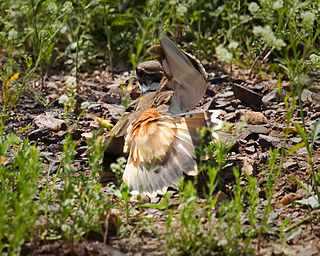 W
WDistraction displays, also known as diversionary displays, or paratrepsis are anti-predator behaviors used to attract the attention of an enemy away from something, typically the nest or young, that is being protected by a parent. Distraction displays are sometimes classified more generically under "nest protection behaviors" along with aggressive displays such as mobbing. These displays have been studied most extensively in bird species, but also have been documented in populations of stickleback fish and in some mammal species.
 W
WDog communication is the transfer of information between dogs, as well as between dogs and humans. Behaviors associated with dog communication are categorized into visual and vocal. Visual communication includes mouth shape and head position, licking and sniffing, ear and tail positioning, eye gaze, facial expression, and body posture. Dog vocalizations, or auditory communication, can include barks, growls, howls, whines and whimpers, screams, pants and sighs. Dogs also communicate via gustatory communication, utilizing scent and pheromones.
 W
WCats and dogs have a range of interactions. The natural instincts of each species lead towards antagonistic interactions, though individual animals can have non-aggressive relationships with each other, particularly under conditions where humans have socialized non-aggressive behaviors.
 W
WDominance in ethology is an "individual's preferential access to resources over another".
 W
WA dominance signal is used in a dominance hierarchy or pecking order to indicate an animal's dominance. Dominance signals are a type of internal environment signal that demonstrate the signalers attributes [2]. Dominance signals are necessary for several species for mating, maintaining social hierarchies and defending territories Dominance signals also provide information about an animals fitness. Animals have developed conflict management strategies to reduce frequency of aggressive incidents in competitive matters. This evolution is the basis of dominance signals[3].
 W
WDung middens, also known as dung hills, are piles of dung that mammals periodically return to and build up. They are used as a form of territorial marker. A range of animals are known to use them including steenbok, hyrax, and rhinoceros. Other animals are attracted to middens for a variety of purposes, including finding food and locating mates. Some species, such as the dung beetle genus Dicranocara of the Richtersveld in South western Africa spend their whole lifecycle in close association with dung middens. Dung middens are also used in the field of Paleobotany, which relies on the fact that each ecosystem is characterized by certain plants, which in turn act as a proxy for climate. Dung middens are useful as they often contain pollen which means fossilized dung middens can be used in Paleobotany to learn about past climates.
 W
WFacial Action Coding System (FACS) is a system to taxonomize human facial movements by their appearance on the face, based on a system originally developed by a Swedish anatomist named Carl-Herman Hjortsjö. It was later adopted by Paul Ekman and Wallace V. Friesen, and published in 1978. Ekman, Friesen, and Joseph C. Hager published a significant update to FACS in 2002. Movements of individual facial muscles are encoded by FACS from slight different instant changes in facial appearance. It is a common standard to systematically categorize the physical expression of emotions, and it has proven useful to psychologists and to animators. Due to subjectivity and time consumption issues, FACS has been established as a computed automated system that detects faces in videos, extracts the geometrical features of the faces, and then produces temporal profiles of each facial movement.
 W
WGirneys are soft vocalizations used by species of Old World monkeys to ease affiliative social interactions between unrelated members of the same species. The vocalizations are most commonly used by adult females around birthing season; the female will direct the call towards an unrelated mother and her offspring as an attempt to initiate friendly contact. However, mothers themselves will never direct girneys towards their own offspring as girneys do not increase affiliative interactions between relatives. Monkeys will also produce call when interacting with a dominant member of the same species, and when avoiding further conflict after becoming victim of an agonistic interaction. In all contexts, the vocalization is beneficial as it allows the signaler to inform potential aggressor that they are nonthreatening, thereby reducing the chance of attack and increasing fitness. Girneys are often accompanied by lip-smacking and a hesitant approach towards the dominant monkey. If the vocalization successfully reduces tension, it may be followed by allogrooming, alloparenting, and/or a rocking embrace.
 W
WThe handicap principle is a hypothesis proposed by Amotz Zahavi to explain how evolution may lead to "honest" or reliable signalling between animals which have an obvious motivation to bluff or deceive each other. It suggests that costly signals must be reliable signals, costing the signaller something that could not be afforded by an individual with less of a particular trait. For example, in sexual selection, the theory suggests that animals of greater biological fitness signal this status through handicapping behaviour, or morphology that effectively lowers this quality. The central idea is that sexually selected traits function like conspicuous consumption, signalling the ability to afford to squander a resource. Receivers then know that the signal indicates quality, because inferior quality signallers are unable to produce such wastefully extravagant signals.
 W
WHuman–canine bonding is the relationship between dogs and humans. This bond can be traced back at least 15,000 years ago to the Bonn-Oberkassel dog that was found buried with two humans. For centuries, dogs have been labeled as "man's best friend," offering companionship and loyalty to their human counterparts. This is evident in most homes where dogs are domesticated. Children and adults have cordial relationships with all types of dogs.
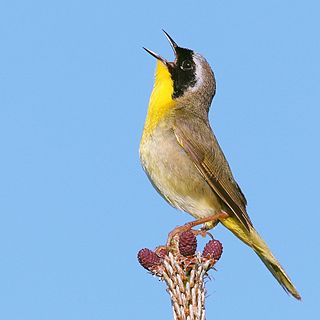 W
WThe International Bioacoustics Council (IBAC) was founded in 1969 to encourage international participation throughout the field of bioacoustics. Given its multidisciplinary nature, IBAC aims to bring together biologists from different specialisms. as well as engineers, sound archivists, computer scientists and other interested parties to foster discussion, share knowledge and exchange ideas surrounding the subject of vocal communication in animals.
 W
WThe Lombard effect or Lombard reflex is the involuntary tendency of speakers to increase their vocal effort when speaking in loud noise to enhance the audibility of their voice. This change includes not only loudness but also other acoustic features such as pitch, rate, and duration of syllables. This compensation effect maintains the auditory signal-to-noise ratio of the speaker's spoken words.
 W
WMobbing in animals is an antipredator adaptation in which individuals of prey species mob a predator by cooperatively attacking or harassing it, usually to protect their offspring. A simple definition of mobbing is an assemblage of individuals around a potentially dangerous predator. This is most frequently seen in birds, though it is also known to occur in many other animals such as the meerkat and some bovines. While mobbing has evolved independently in many species, it only tends to be present in those whose young are frequently preyed upon. This behavior may complement cryptic adaptations in the offspring themselves, such as camouflage and hiding. Mobbing calls may be used to summon nearby individuals to cooperate in the attack.
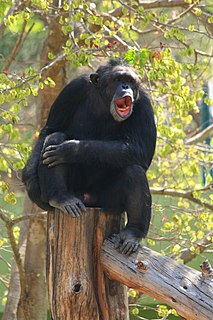 W
WThe pant-hoot (call) is a well-studied, structurally complex and long-distance vocalization of chimpanzees. The call is generally divided into four distinct, successive phases: introduction, build-up, climax and let-down. This introductory phase begins with soft, breathy, low-frequency 'hoo's' that transition into the build-up phase; a series of increasingly rapid, low-frequency in-and-out pants. Following the build-up phase, the call quickly builds into the climax, consisting of loud, high-frequency screams that eventually slow into the let-down phase, similar in structure to the build-up, but with decreasing amplitude and pace until the call is complete.
 W
WThe preorbital gland is a paired exocrine gland found in many species of hoofed animals, which is homologous to the lacrimal gland found in humans. These glands are trenchlike slits of dark blue to black, nearly bare skin extending from the medial canthus of each eye. They are lined by a combination of sebaceous and sudoriferous glands, and they produce secretions which contain pheromones and other semiochemical compounds. Ungulates frequently deposit these secretions on twigs and grass as a means of communication with other animals.
 W
WRobosquirrel refers to several versions of robotic squirrels developed by researchers at the University of California, Davis and San Diego State University. Robosquirrel is currently in use and development in an interdisciplinary research project that uses biorobotics to investigate how communication between prey and predators evolve in response to each other. It has received extensive science and popular media coverage. It stirred controversy when Senator Tom Coburn listed it in his Wastebook 2012 as a scientific research project that wastes United States federal tax dollars. Senator Coburn's release of Wastebook 2012 was quickly picked up by the popular media and the robosquirrel project was the headline of many media stories.
 W
WA round dance is the communicative behaviour of a foraging honey bee, in which she moves on the comb in close circles, alternating right and then left. It is previously believed that the round dance indicates that the forager has located a profitable food source close to the hive and the round dance transitions into the waggle dance when food sources are more than 50 meters away. Recent research shows that bees have only one dance that always encodes distance and direction to the food source, but that precision and expression of this information depends on the distance to the target; therefore, the use of "round dance" is outdated. Elements of the round dance also provide information regarding the forager's subjective evaluation of the food source's profitability.
 W
WIn 1938, the Austrian ethologist Karl von Frisch made his first report on the existence of the chemical alarm signal known as Schreckstoff in minnows. An alarm signal is a response produced by an individual, the “sender”, reacting to a hazard that warns other animals, the receivers, of danger. This chemical alarm signal is only released when the sender incurs mechanical damage, such as when it has been caught by a predator, and is detected by the olfactory system. When this signal reaches the receivers, they perceive a greater predation risk and exhibit an antipredator response. Since populations of fish exhibiting this trait survive more successfully, the trait is maintained via natural selection. While the evolution of this signal was once a topic of great debate, recent evidence suggests schreckstoff evolved as a defense against environmental stressors such as pathogens, parasites, and UVB radiation and that it was later co-opted by predators and prey as a chemical signal.
 W
WSeismic or vibrational communication is a process of conveying information through mechanical (seismic) vibrations of the substrate. The substrate may be the earth, a plant stem or leaf, the surface of a body of water, a spider's web, a honeycomb, or any of the myriad types of soil substrates. Seismic cues are generally conveyed by surface Rayleigh or bending waves generated through vibrations on the substrate, or acoustical waves that couple with the substrate. Vibrational communication is an ancient sensory modality and it is widespread in the animal kingdom where it has evolved several times independently. It has been reported in mammals, birds, reptiles, amphibians, insects, arachnids, crustaceans and nematode worms. Vibrations and other communication channels are not necessarily mutually exclusive, but can be used in multi-modal communication.
 W
WSelf-anointing in animals, sometimes called anointing or anting, is a behaviour whereby a non-human animal smears odoriferous substances over themselves. These substances are often the secretions, parts, or entire bodies of other animals or plants. The animal may chew these substances and then spread the resulting saliva mixture over their body, or they may apply the source of the odour directly with an appendage, tool or by rubbing their body on the source.
 W
WA shepherd's whistle is a specialized, modulatable, variable-pitch whistle used to train and transmit commands to a sheepdog to aid in herding. Unlike other whistles, they are placed inside the mouth and the sound is controlled by the placement of the tongue. Like tin whistles, while simple, they can be used as musical instruments in their own right.
 W
WWithin evolutionary biology, signalling theory is a body of theoretical work examining communication between individuals, both within species and across species. The central question is when organisms with conflicting interests, such as in sexual selection, should be expected to provide honest signals rather than cheating. Mathematical models describe how signalling can contribute to an evolutionarily stable strategy.
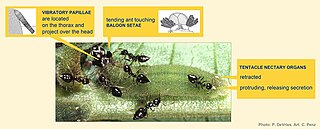 W
WSinging caterpillars is a term coined by Philip James DeVries, referring to the fact that the larvae of ant-associated butterfly species of the families Riodinidae and Lycaenidae produce substrate borne sounds that attract ants. The study of these symbiotic associations was pioneered by Phil DeVries in Central America, and Naomi Pierce in Australia. Recently, Lucas Kaminski and collaborators are expanding the studies of riodinid-ant symbioses in Brazil.
 W
WIn biology and game theory, the Sir Philip Sidney game is used as a model for the evolution and maintenance of informative communication between relatives. Developed by John Maynard Smith as a model for chick begging behavior, it has been studied extensively including the development of many modified versions.
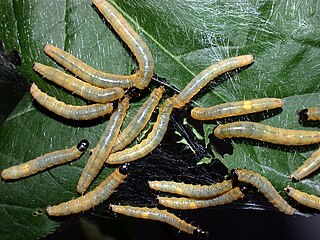 W
WThe collective behaviors of social caterpillars falls into five general categories: collective and cooperative foraging, group defense against predators and parasitoids, shelter building, thermoregulation and substrate silking to enhance steadfastness.
 W
WSocial facilitation in animals is when the performance of a behaviour by an animal increases the probability of other animals also engaging in that behaviour or increasing the intensity of the behaviour. More technically, it is said to occur when the performance of an instinctive pattern of behaviour by an individual acts as a releaser for the same behaviour in others, and so initiates the same line of action in the whole group. It has been phrased as "The energizing of dominant behaviors by the presence of others."
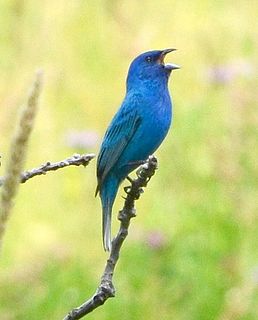 W
WAnimal song is not a well-defined term in scientific literature, and the use of the more broadly defined term 'vocalizations' is in more common use. Song generally consists of several successive vocal sounds incorporating multiple syllables. Some sources distinguish between simpler vocalizations, termed “calls”, reserving the term “song” for more complex productions. Song-like productions have been identified in several groups of animals, including cetaceans, avians (birds), anurans (frogs), and humans. Social transmission of song has been found in groups including birds and cetaceans.
 W
WThe tapetum lucidum is a layer of tissue in the eye of many vertebrates. Lying immediately behind the retina, it is a retroreflector. It reflects visible light back through the retina, increasing the light available to the photoreceptors. The tapetum lucidum contributes to the superior night vision of some animals. Many of these animals are nocturnal, especially carnivores, while others are deep sea animals.
 W
WUltrasonic vocalizations (USVs) occur at frequencies ranging from approximately 20–100 kHz. They are emitted by animals such as bats and rodents, and have been extensively studied in rats and mice. As opposed to sonic vocalizations, ultrasonic vocalizations cannot be detected by the human ear. USVs serve as social signals, and are categorized according to their frequency. Different categories of USVs are elicited in response to different situations and varying affective states. The behavioural functions of USVs vary as a rat or mouse pup reaches the juvenile/adult stage of their development. The brain mechanisms behind calling behaviour have also been studied, and some studies have used pharmacological manipulation.
 W
WThe vocal sac is the flexible membrane of skin possessed by most male frogs. The purpose of the vocal sac is usually as an amplification of their mating or advertisement call. The presence or development of the vocal sac is one way of externally determining the sex of a frog in many species.
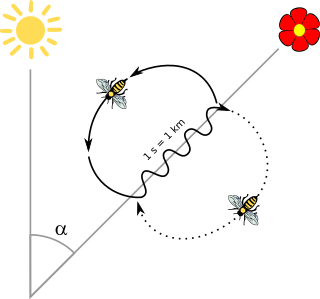 W
WWaggle dance is a term used in beekeeping and ethology for a particular figure-eight dance of the honey bee. By performing this dance, successful foragers can share information about the direction and distance to patches of flowers yielding nectar and pollen, to water sources, or to new nest-site locations with other members of the colony.
 W
WWildlife Acoustics, Inc. is a privately held United States company based in Maynard, Massachusetts. The company provides bioacoustics monitoring technology for scientists, researchers, and government agencies internationally. The company was founded by Ian Agranat in 2003. The company originally developed a product called the Song Sleuth, a device that would attempt to automatically identify birds from their songs in real time in the field. As this concept proved too expensive for the consumer market, the underlying technology was used to develop autonomous acoustic and ultrasonic recorders and analysis software for research scientists and other professional ecologists.
 W
WWolf communication is an animal communication which is used by wolves to anticipate what their packmates or other wolves might do next. It includes the use of vocalization, body posture, scent, touch, and taste. The lunar phases have no effect on wolf vocalisation. Despite popular belief, wolves do not howl at the moon. Gray wolves howl to assemble the pack, usually before and after hunts, to pass on an alarm particularly at a den site, to locate each other during a storm or while crossing unfamiliar territory, and to communicate across great distances. Other vocalisations include growls, barks and whines. Wolves do not bark as loudly or continuously as dogs do but they bark a few times and then retreat from a perceived danger. Aggressive or self-assertive wolves are characterized by their slow and deliberate movements, high body posture and raised hackles, while submissive ones carry their bodies low, sleeken their fur, and lower their ears and tail. Raised leg urination is considered to be one of the most important forms of scent communication in the wolf, making up 60–80% of all scent marks observed.